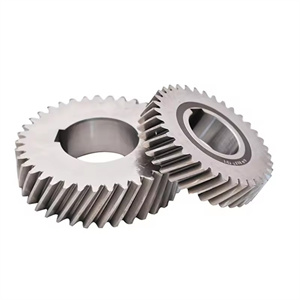Tempering Of Gears
The tempering treatment of gears is an important heat treatment process aimed at improving the performance of gears to meet specific application requirements.
1. Purpose of tempering treatment
Reducing brittleness: Eliminating or reducing the internal stress and brittleness generated by gears during quenching, preventing deformation or cracking of gears during use.
Adjusting mechanical performance: Based on the purpose and working environment of the gear, adjust the hardness, strength, and toughness of the gear through appropriate tempering temperature and time to achieve the required mechanical performance.
Stable workpiece size: Through tempering treatment, the size of gears can be stabilized, reducing size changes caused by heat treatment.
Improving cutting performance: For certain alloy steels, high-temperature tempering can allow carbides to gather appropriately, reduce hardness, and facilitate subsequent cutting processing.
2. Key parameters for tempering treatment
Tempering temperature: The commonly used tempering temperature is generally between 200 ℃ and 650 ℃, and the specific temperature depends on the material, performance requirements, and operating environment of the gear.
Tempering time: The length of tempering time also affects the performance of gears and needs to be determined based on specific circumstances.
3. The process of tempering treatment
Heating: Place the gear in a tempering furnace and gradually heat it to the predetermined tempering temperature. The heating speed needs to be controlled to avoid gear deformation or cracking caused by excessive heating.
Insulation: After the gear reaches the predetermined temperature, maintain it for a period of time to fully transform the internal structure of the gear. The length of insulation time depends on the material, size, and required performance of the gear.
Cooling: After the insulation is completed, take the gear out of the tempering furnace and slowly cool it. Rapid cooling may cause new stresses to be generated inside the gears, therefore the cooling process needs to be strictly controlled.
4. Precautions
Cleaning: Before tempering treatment, it is necessary to ensure that the surface of the gear is clean and free of pollutants such as oil and rust.
Safety protection: During the tempering process, attention should be paid to safety protection measures to avoid accidents such as fires and burns.
Quality testing: After tempering, the gears need to undergo strict quality testing, including hardness, strength, size, and other aspects, to ensure that they meet the requirements for use.
